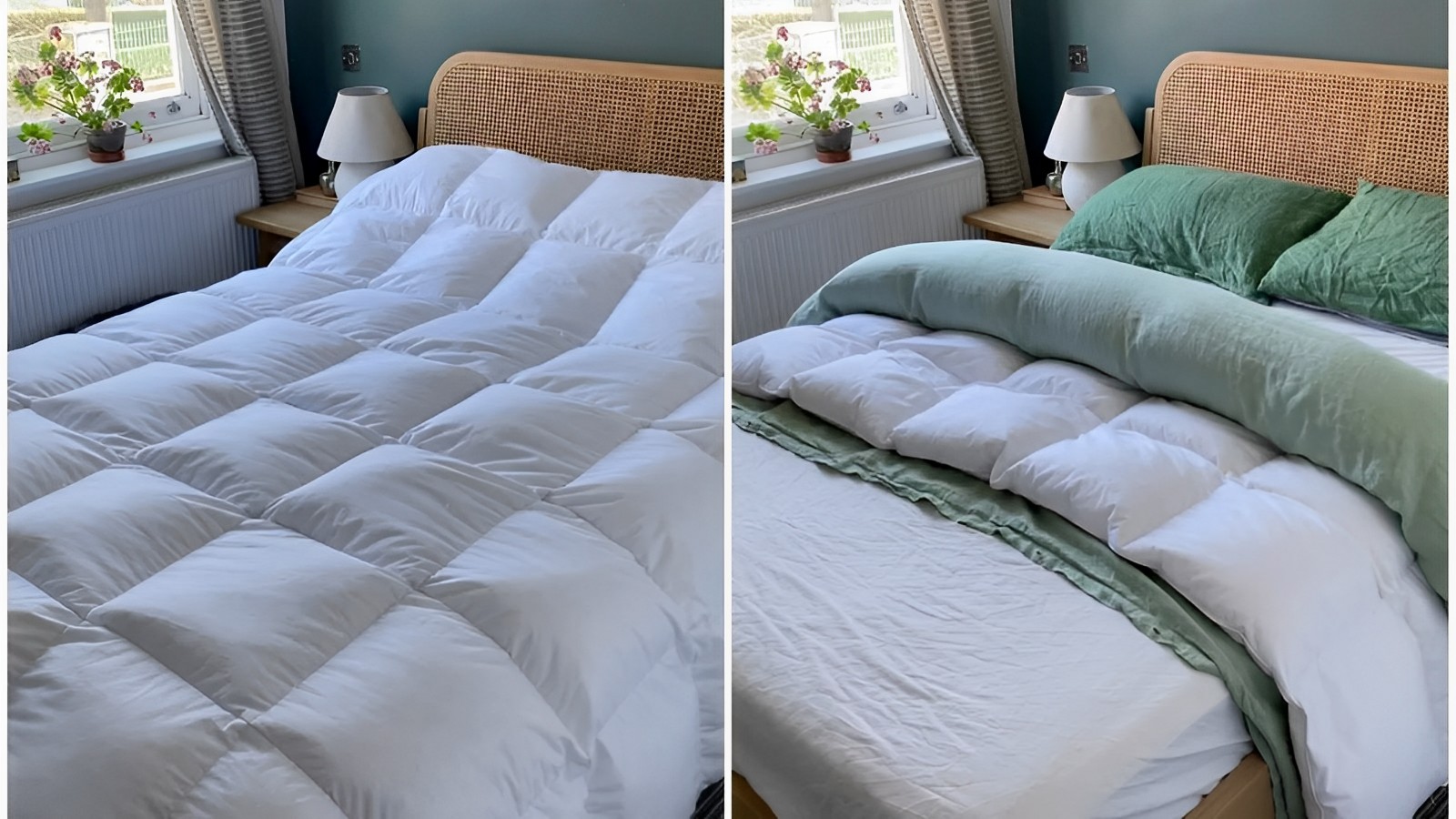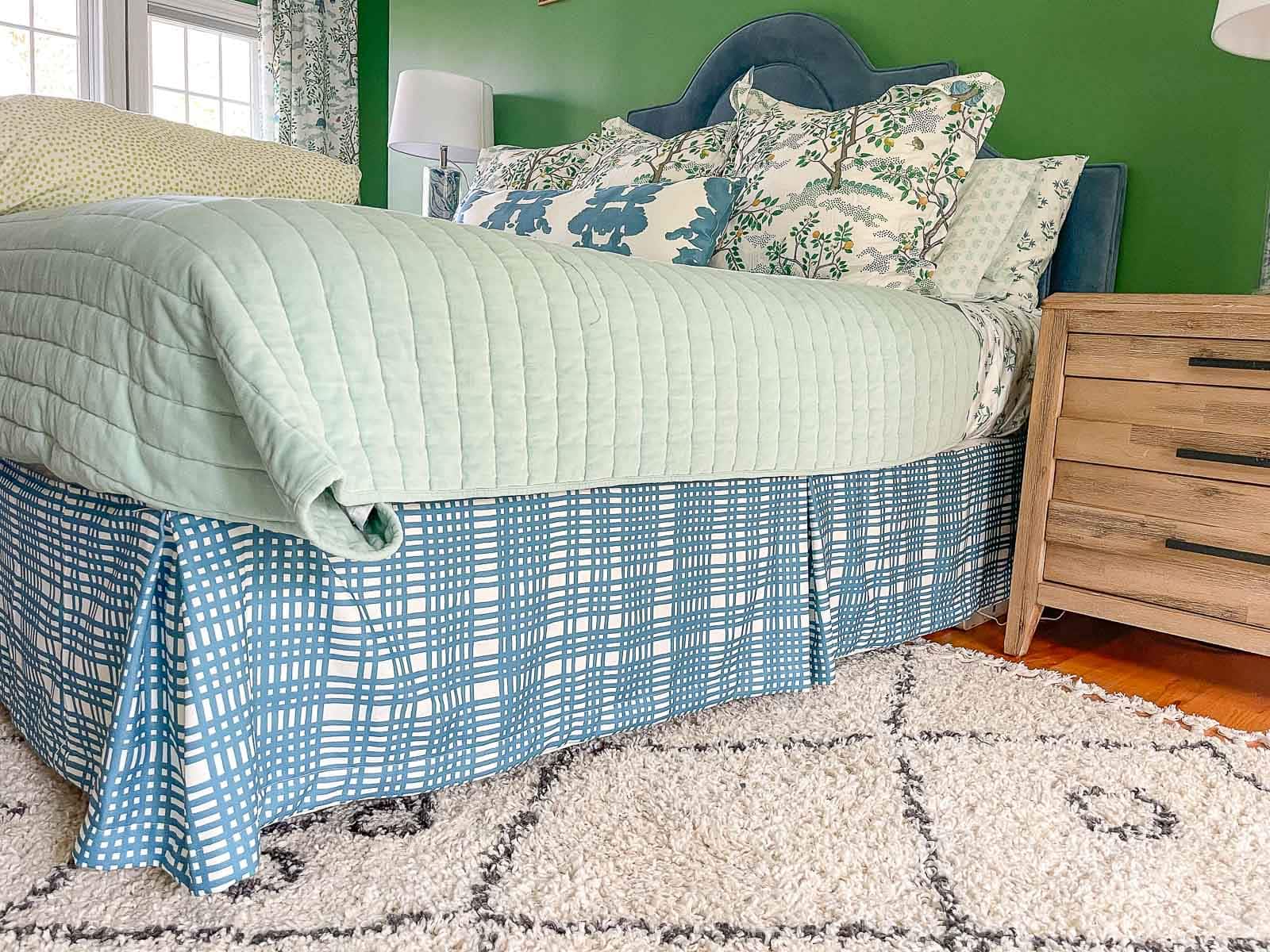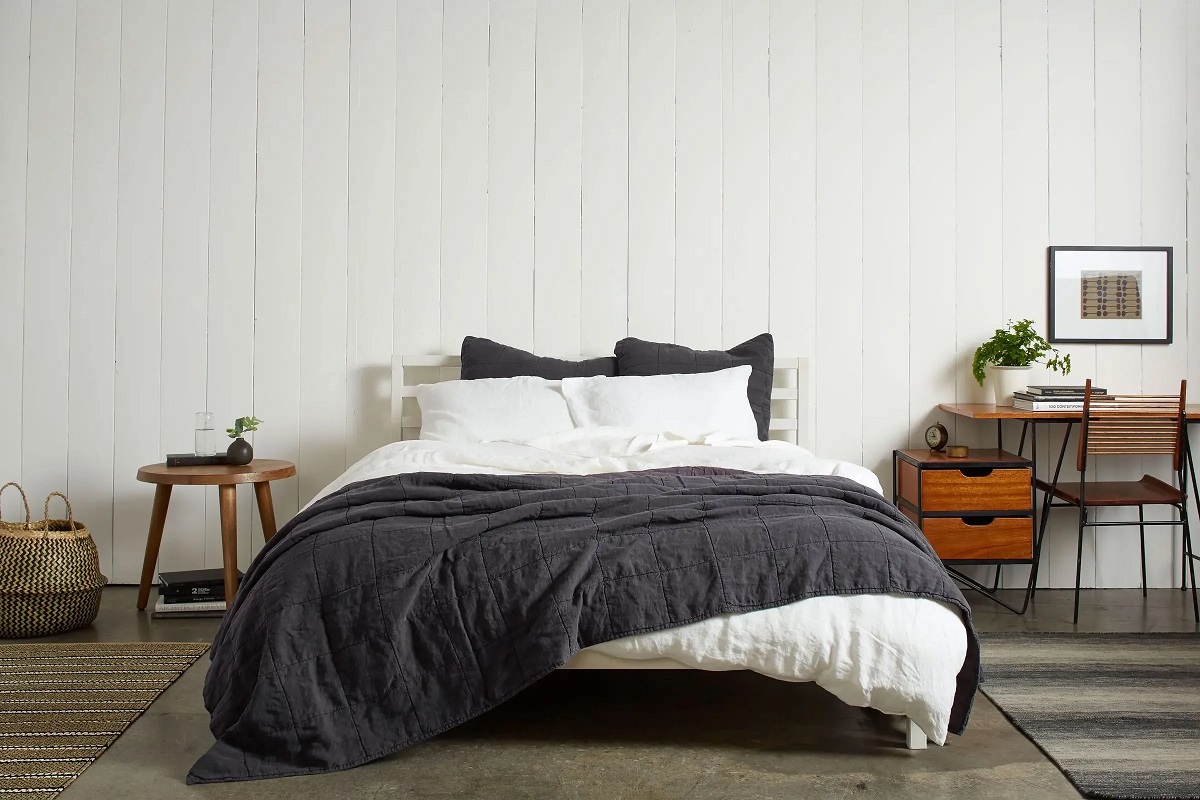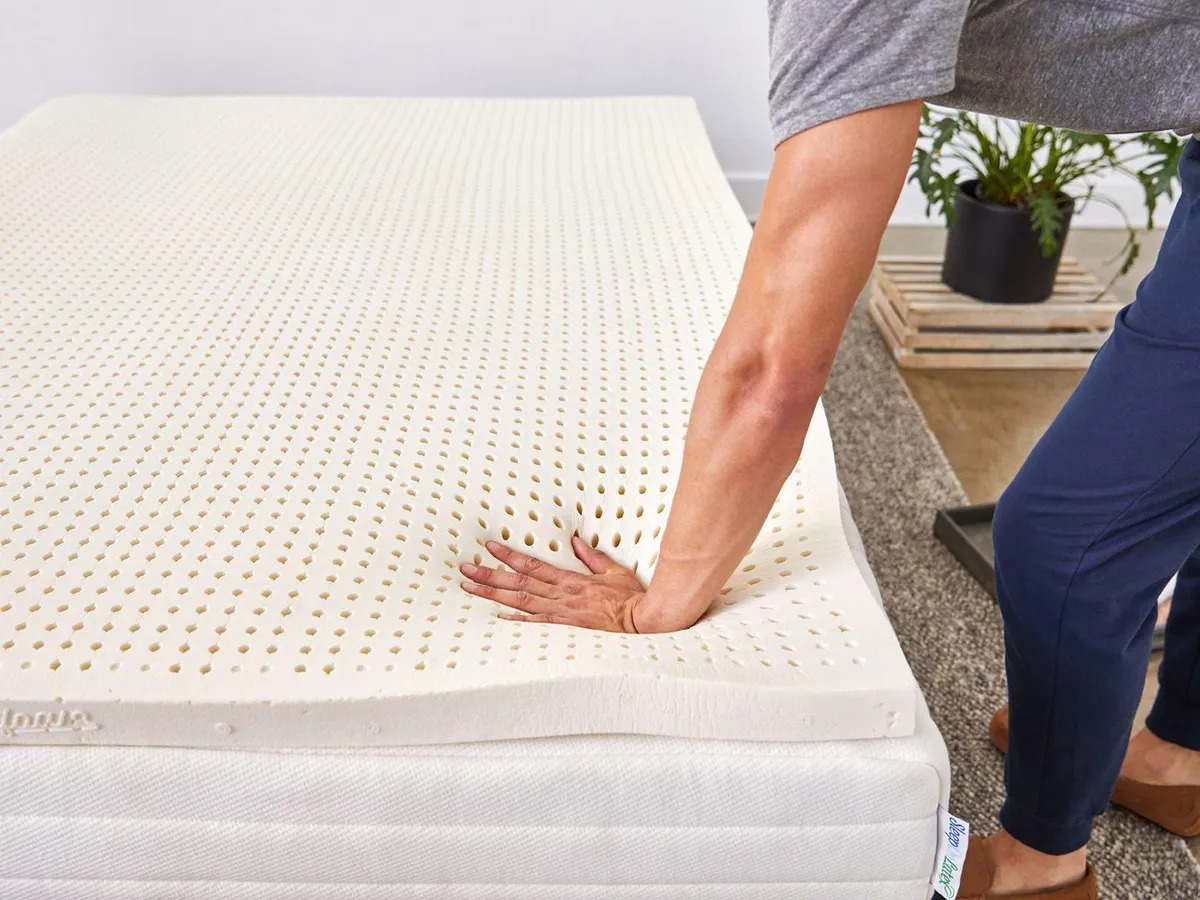Home>Furniture>Bedroom Furniture>How To Make A Bed Firmer
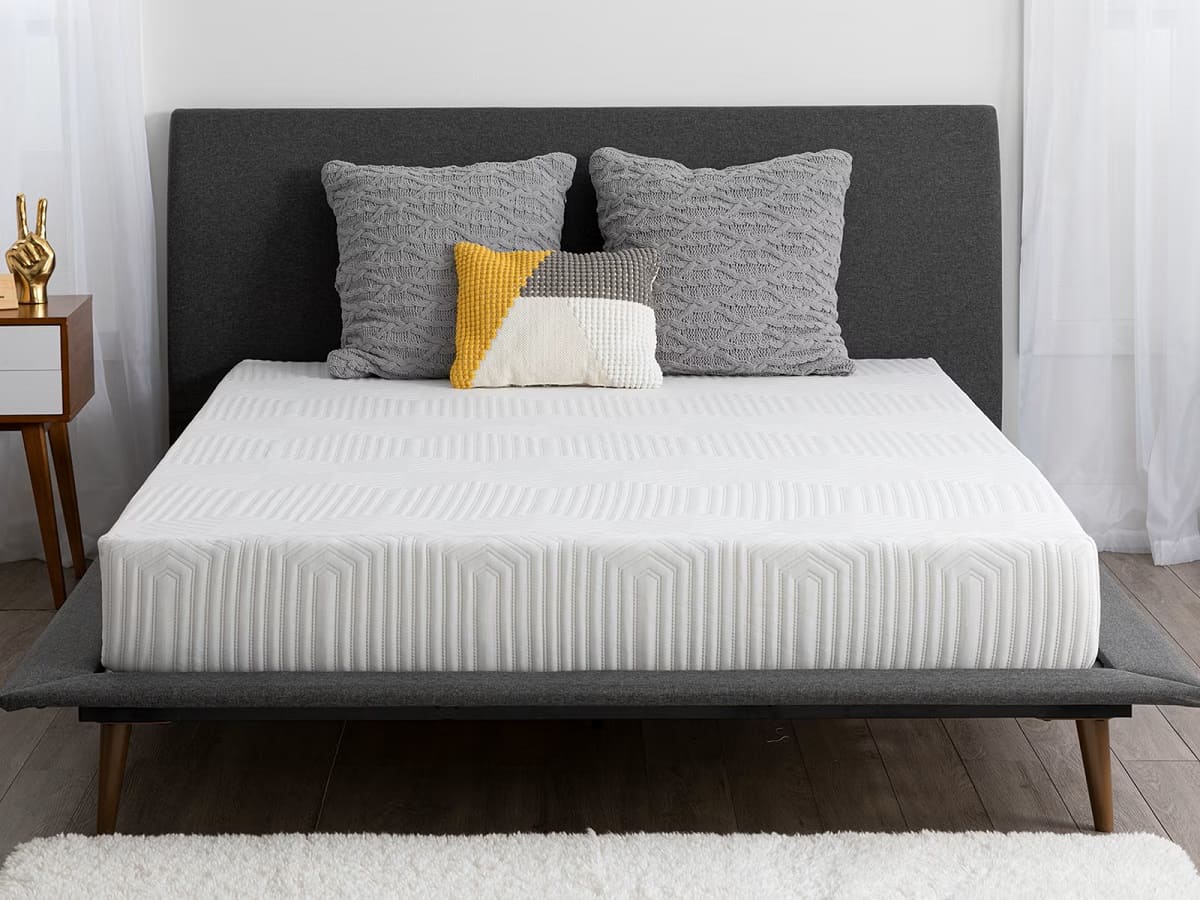

Bedroom Furniture
How To Make A Bed Firmer
Modified: January 9, 2024
Discover effective ways to make your bed firmer with our bedroom furniture tips. Enhance your sleep experience and create a more supportive sleeping surface.
(Many of the links in this article redirect to a specific reviewed product. Your purchase of these products through affiliate links helps to generate commission for Storables.com, at no extra cost. Learn more)
Introduction
Having a comfortable and supportive bed is essential for a good night’s sleep. However, if your bed feels too soft or lacks the necessary firmness, it can lead to discomfort and restless nights. Fortunately, there are several ways to make a bed firmer and enhance your sleeping experience.
In this article, we will explore various methods that can help you achieve a firmer bed. From adjusting your mattress to using mattress toppers and adding supportive layers, we will cover all the aspects you need to know. So, let’s dive in and discover how you can make your bed feel firmer and more supportive.
Key Takeaways:
- Achieving a firmer bed is essential for better sleep, back support, and injury recovery. Assess your mattress, make adjustments, and consider supportive layers for a more comfortable and restful night’s sleep.
- Tighten your bed frame, add supportive layers, and consider a new mattress for optimal firmness. Prioritize comfort and well-being to enhance your sleep quality and overall health.
Read more: How To Make Couch Cushions Firmer
Reasons for Making a Bed Firmer
There are several reasons why you might want to make your bed firmer. Let’s explore some of the common reasons:
- Support and Alignment: A firmer bed provides better support, ensuring proper alignment of your spine, neck, and other body parts. This can help alleviate back pain and promote a more restful sleep.
- Preference: Some individuals simply prefer the feeling of a firmer bed. It can offer a sense of stability and prevent sinking too deeply into the mattress.
- Injury or Recovery: If you’re recovering from an injury or undergoing physical therapy, a firmer mattress can offer the necessary support to aid in healing and prevent further strain on your body.
- Weight Distribution: Firmer beds are often better for distributing body weight evenly, reducing pressure points, and reducing the likelihood of developing discomfort or pain.
- Longevity: Over time, mattresses may start to lose their firmness. Making your bed firmer can help extend its lifespan and maintain the level of support it provides.
Understanding the reasons behind the need for a firmer bed will help you determine the best approach for achieving the desired level of firmness. Whether you want better support, have personal preferences, or are recovering from an injury, making your bed firmer can greatly improve your sleep quality and overall well-being.
Assessing Your Current Bed
Before you make any changes to your bed to increase its firmness, it’s important to assess your current setup. This will help you identify any underlying issues and determine the most effective solution for achieving a firmer sleeping surface.
Start by evaluating the condition and age of your mattress. Over time, mattresses can become worn out and lose their original firmness. If your mattress is more than 8-10 years old, it may be a good idea to consider replacing it with a new one that offers better support.
Next, determine the type of mattress you have. Different mattress materials provide varying levels of firmness. For example, memory foam mattresses tend to be on the softer side, while latex and innerspring mattresses tend to offer more firmness. Understanding the characteristics of your mattress will help you gauge how much firmness you need to add.
Additionally, consider your sleeping position and body weight. Side sleepers may prefer a slightly softer mattress for better pressure relief, while back and stomach sleepers often benefit from a firmer sleeping surface for enhanced spinal alignment. If you’re on the heavier side, you may require a firmer mattress than someone who is lightweight.
Take note of any specific areas on the mattress that feel saggy or less supportive. This can help you target those areas when making adjustments to enhance the overall firmness.
By assessing your current bed, you’ll have a better understanding of its condition and the level of firmness it provides. This knowledge will guide you in choosing the appropriate methods to make your bed firmer and more comfortable for a restful night’s sleep.
Adjusting Your Mattress
If your mattress is still in good condition but feels too soft, there are several adjustments you can make to increase its firmness:
- Rotate the Mattress: Over time, mattresses can develop body impressions, causing certain areas to feel softer than others. By rotating the mattress 180 degrees, you can redistribute the wear and make the surface feel firmer.
- Flip the Mattress: If you have a double-sided mattress, flipping it over can provide a firmer sleeping surface. However, not all mattresses are designed to be flipped, so check the manufacturer’s instructions before doing so.
- Adjust the Mattress Base: If you have a mattress that sits on a foundation or box spring, check if the base is properly supporting the mattress. If it’s sagging or worn out, replacing it with a new one can significantly improve the firmness.
- Tighten Loose Springs: If you have an innerspring mattress and notice any loose or squeaky springs, use pliers to tighten them. This can help restore firmness and eliminate any uncomfortable sagging.
- Add Plywood Support: Placing a sheet of plywood between the mattress and the foundation can add extra support and make the bed feel firmer. Make sure the plywood is smooth and doesn’t have any rough edges that could damage the mattress.
Experiment with these adjustments to find the right level of firmness that suits your preferences. Keep in mind that not all mattresses can be effectively adjusted, so it’s important to consider other options if these adjustments don’t provide the desired results.
Remember, it’s crucial to prioritize your comfort and support when making adjustments to your mattress. If none of these adjustments work or if your mattress is already too old or worn out, it may be time to consider alternative solutions such as using a mattress topper or adding supportive layers.
Consider adding a firm mattress topper or a layer of plywood between the mattress and box spring to make your bed firmer. This can provide extra support and reduce sagging.
Using a Mattress Topper
If your mattress still lacks the desired firmness after adjusting it, using a mattress topper can be an effective solution. A mattress topper is a removable layer of padding that sits on top of your mattress, adding extra support and comfort.
When selecting a mattress topper to increase the firmness of your bed, look for options that provide a firmer feel. Some mattress toppers are specifically designed for this purpose, offering additional support and reducing the sinking sensation associated with softer mattresses.
Here are a few types of mattress toppers that can help make your bed firmer:
- Latex Foam Topper: Latex foam toppers are known for their responsiveness and durability. They provide excellent support and can add a significant firmness boost to your mattress.
- Firm Memory Foam Topper: Memory foam toppers are available in different firmness levels. Opting for a firmer memory foam topper can help alleviate the feeling of sinking and provide better support for your body.
- Wool Topper: Wool toppers are naturally resilient and can offer a firmer feel to a softer mattress. They also provide temperature regulation benefits, keeping you cool in the summer and warm in the winter.
- Cotton Topper: Cotton toppers are less thick but can still provide some extra firmness. They are more affordable options and can be a good choice if you’re looking for a subtle firmness boost.
When using a mattress topper, ensure that it fits securely on your mattress and doesn’t shift during the night. Additionally, consider the thickness of the topper. Thicker toppers generally provide a more pronounced firmness boost, while thinner toppers offer a more subtle effect.
Remember, a mattress topper is a temporary solution and may not fully compensate for a mattress that is significantly worn out or unsupportive. If your mattress is in poor condition, it may be worth considering investing in a new one for long-term comfort and support.
Read more: How To Make A Bed
Adding Supportive Layers
If your bed still lacks the desired firmness after adjusting the mattress and using a mattress topper, adding supportive layers can further enhance its firmness and support. Here are some effective ways to add supportive layers:
- Firm Mattress Pad: A firm mattress pad is a thin layer that sits on top of your mattress but under your sheets. It adds an extra level of firmness and can help prevent the feeling of sinking into a soft mattress.
- Plywood Board: Placing a sturdy plywood board between the mattress and the foundation or bed frame can provide additional support. Make sure the plywood is smooth and doesn’t have any rough edges that could damage the mattress.
- Slat Support: If you have a bed frame with wooden slats, check their condition and spacing. Adding extra slats or replacing the existing ones can improve the support and firmness of your mattress.
- Adjustable Bed Base: Investing in an adjustable bed base allows you to customize the firmness and support of your bed. By raising the head or foot of the bed, you can achieve a firmer sleeping surface that suits your preferences.
- Bunkie Board: A bunkie board is a flat and solid panel that replaces a box spring. It provides a firm foundation for your mattress and helps improve its overall support.
Adding supportive layers is a versatile and cost-effective solution to increase the firmness of your bed. It allows you to customize the level of support according to your specific needs and preferences.
Consider combining different supportive layers to achieve the desired firmness level. However, be cautious not to add too many layers, as it can make the bed uncomfortably hard.
Remember, adding supportive layers is a temporary solution. If your current mattress is too old or worn out, you might want to consider investing in a new mattress that offers better support and comfort.
Tightening the Bed Frame
Another crucial aspect to consider when aiming to make your bed firmer is the stability and tightness of the bed frame. A loose or wobbly bed frame can contribute to a lack of support and make your mattress feel softer than it actually is. Follow these steps to tighten your bed frame:
- Inspect the Joints: Carefully examine the joints of your bed frame, including the corners and connection points. Look for any loose screws, nuts, or bolts that may need tightening.
- Use a Wrench or Screwdriver: Depending on the type of fasteners used in your bed frame, use an appropriate wrench or screwdriver to tighten any loose screws, nuts, or bolts. Make sure to tighten them securely but avoid over-tightening, as it can damage the frame.
- Check the Slats: If your bed frame has wooden slats, ensure they are properly aligned and secured. If any slats are loose, tighten the screws or connectors that hold them in place.
- Consider Additional Support: If your bed frame is still not sturdy enough, you might want to consider adding additional support. This can be done by placing wood blocks or braces between the frame and the floor to eliminate any wobbling or unevenness.
- Test for Stability: Once you have tightened the bed frame, give it a gentle shake and check for any remaining movement or instability. If you still notice excessive movement, repeat the tightening process or consider replacing the bed frame.
Tightening your bed frame can significantly improve the overall stability and firmness of your bed. It ensures that the mattress is properly supported and minimizes the chances of sagging or sinking in certain areas.
Remember to periodically check and retighten the bed frame to maintain its stability over time. Loose fasteners can gradually loosen with regular use, so it’s important to stay proactive in maintaining a firm and supportive bed frame.
Conclusion
Making a bed firmer can greatly improve your sleep quality and overall comfort. By assessing your current bed, adjusting your mattress, using a mattress topper, adding supportive layers, and tightening the bed frame, you can achieve the ideal level of firmness that suits your preferences and needs.
It’s important to remember that there is no one-size-fits-all approach to making a bed firmer. Each individual’s preferences and requirements may vary, so it may take some trial and error to find the perfect combination of methods that work for you.
Additionally, if your mattress is old, worn out, or significantly lacking in support, it may be worth considering investing in a new mattress that offers the firmness you desire. A high-quality mattress provides essential support for your body and is crucial for a good night’s sleep.
Ultimately, prioritizing your comfort and well-being when it comes to your bed is essential. Whether it’s adjusting your current mattress, adding supportive layers, or investing in a new mattress, taking the steps to achieve a firmer bed is a worthwhile investment in your sleep health.
Now that you have a better understanding of the various methods for making your bed firmer, it’s time to put them into action. Assess your current bed, determine the level of firmness you desire, and explore the options that best suit your needs. With a firmer bed, you can look forward to more restful nights and a rejuvenated wake-up in the morning.
Frequently Asked Questions about How To Make A Bed Firmer
Was this page helpful?
At Storables.com, we guarantee accurate and reliable information. Our content, validated by Expert Board Contributors, is crafted following stringent Editorial Policies. We're committed to providing you with well-researched, expert-backed insights for all your informational needs.

